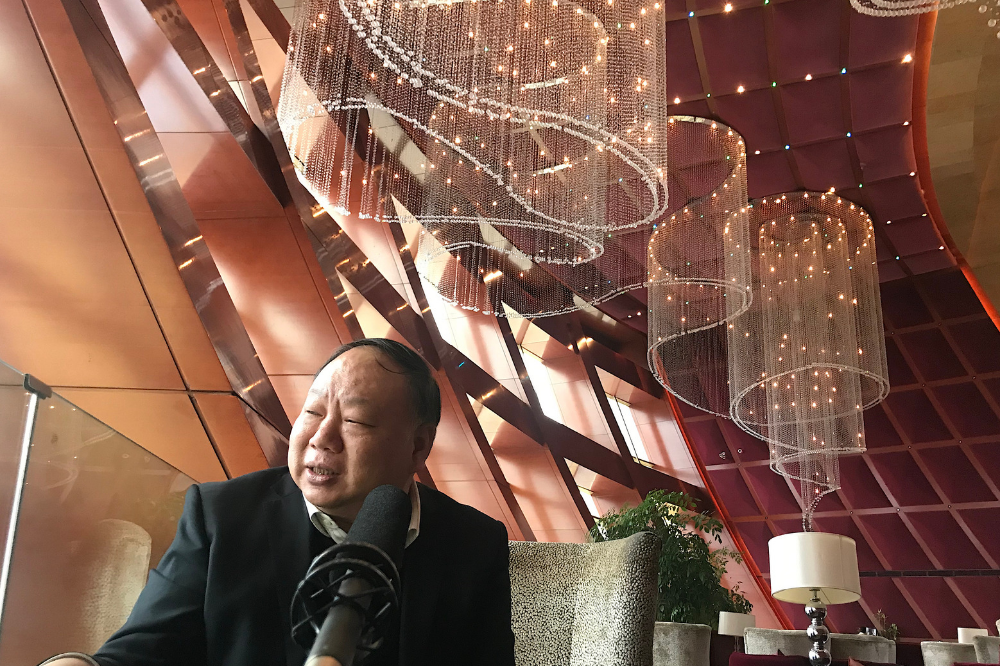China has launched at least 9 human studies with the powerful genome-editor called CRISPR, more than any other country, and when I visited there in February I had hoped to meet with the researchers conducting them and their patients. But in November, CRISPR and China became synonymous with an experiment that outraged the international scientific community: News accounts revealed that He Jiankui, a researcher at the Southern University of Science and Technology in Shenzhen, had quietly edited the genes of two embryos and implanted them, leading to the birth of twin girls. The ensuing controversy led the government to intensify scrutiny of other CRISPR studies in the country, and many clinical researchers using the tool there developed a serious media allergy.
What He did had nothing in common with the other CRISPR studies. Because He edited the embryos shortly after they were created in his laboratory, every cell in those baby girls—including their eggs, the so-called germline—will have the edited gene. A germline edit will pass to offspring forever and anon. Ultimately, germline edits can alter the human species, a la Brave New World.
No one had ever before done a germline edit of a human before, and many CRISPR researchers insisted that the technology was still too glitchy to do this safely. Adding to the controversy, many critics contend that He violated ethics because the risk of the experiment outweighed the potential benefit: He modified a gene to make the babies highly resistant to HIV, even though they faced no immediate risk of becoming infected by the virus and several proven protection methods exist.
The other CRISPR studies were all done in adults who had serious diseases, and the edits did not alter the germline, but rather modified so-called “somatic” cells. The Wall Street Journal had the scoop in January 2018, nearly a year before the He Jiankui story broke, “China, Unhampered by Rules, Races Ahead in Gene-Editing Trials.” The Journal prominently featured Wu Shixiu, an oncologist running a trial of a CRISPR-related esophageal cancer treatment at Hangzhou Cancer Hospital, and the story opened with a photo of one of his patients in a hospital bed. Wu bluntly acknowledged that China had “fewer restrictions.”
In our first e-mail correspondence in January 2019, Wu replied the same day and welcomed me to visit him at his hospital. 9 subsequent e-mails went unanswered. Once I arrived in the country the next month, a friend phoned for me, and Wu explained that I needed approval from the local foreign affairs office before I could visit. A few faxes later, I had permission, but Wu had his own restriction: Come to a hotel restaurant, not his hospital, to talk. “Now it is sensitive,” says Wu. “If you need a photo, I won’t allow it.”
We met at the InterContinental Guangzhou, a giant, shimmering gold sphere that I imagine you can see from space—which is fitting because it’s futuristic in a Jetsons-chic sort of way. It also struck me as a perfect setting to discuss a CRISPR intervention that also is ahead of its time and, as it turns out, about as far from coming to market as the Jetsons’ flying car.
Wu’s completed study was done in 21 adults, and although the treatment clearly did not work and the Journal questioned the speed at which the trial received approval, there was nothing particularly controversial about it: His patients had a life-threatening condition and few options. (The study removed immune cells, attempted to knock out a gene to boost their cancer-killing power, and then returned them to the patients.) But now everything CRISPR was a touchy issue. “After the He Jiankui event, there was a nationwide concern that CRISPR is not very ethical,” explains Wu, who was also stung from being included in a December 2018 Wall Street Journal article about how some Chinese CRISPR studies have lost track of patients.
All but one of Wu’s patients have died, and, as often happen with negative data, he told me that he has had difficulty publishing a paper that describes his failed esophageal cancer treatment. Wu, in part because of the increased scrutiny from government regulators—even about somatic cell modifications—had scuttled plans to do more CRISPR-based treatments.
But Wu had a second reason for not wanting to pursue another CRISPR-modified intervention that struck me as far more profound than concerns about overly strict oversight. Wu cautions that the technology doesn’t make wonder drugs. “I don't know why CRISPR has such a fantastic influence on people,” he says, noting that his patients don’t care how a drug is made. “When you cook, you can use knives with different brands, and who cares which knife you use? They just want the cooking to be delicious.”
I met with a second team of researchers staging a CRISPR clinical trial in Beijing that tried to clear HIV from an infected man who also had leukemia. The creative study, in essence, is a leukemia treatment that, as an add on, tries to cure an HIV infection—and it mimicked an intervention used in Timothy Ray Brown, the only person who ever has ever eliminated HIV from his body. The doctor in charge of the CRISPR study was generous, but also most sensitive about media and did not want to be quoted. I was only able to speak with this patient via a video call on the doctor’s mobile phone, which is a really peculiar way to conduct a sensitive interview. This intervention also did not seem to have worked.
Most new treatments fail, regardless of what tools scientists use to make the medicine. CRISPR, inarguably, simplifies the manufacture of many novel interventions. And its ultimate value may be that it speeds the hunt for solutions to difficult medical problems through the fail-fast/fail-often pathway, not through miracles.
